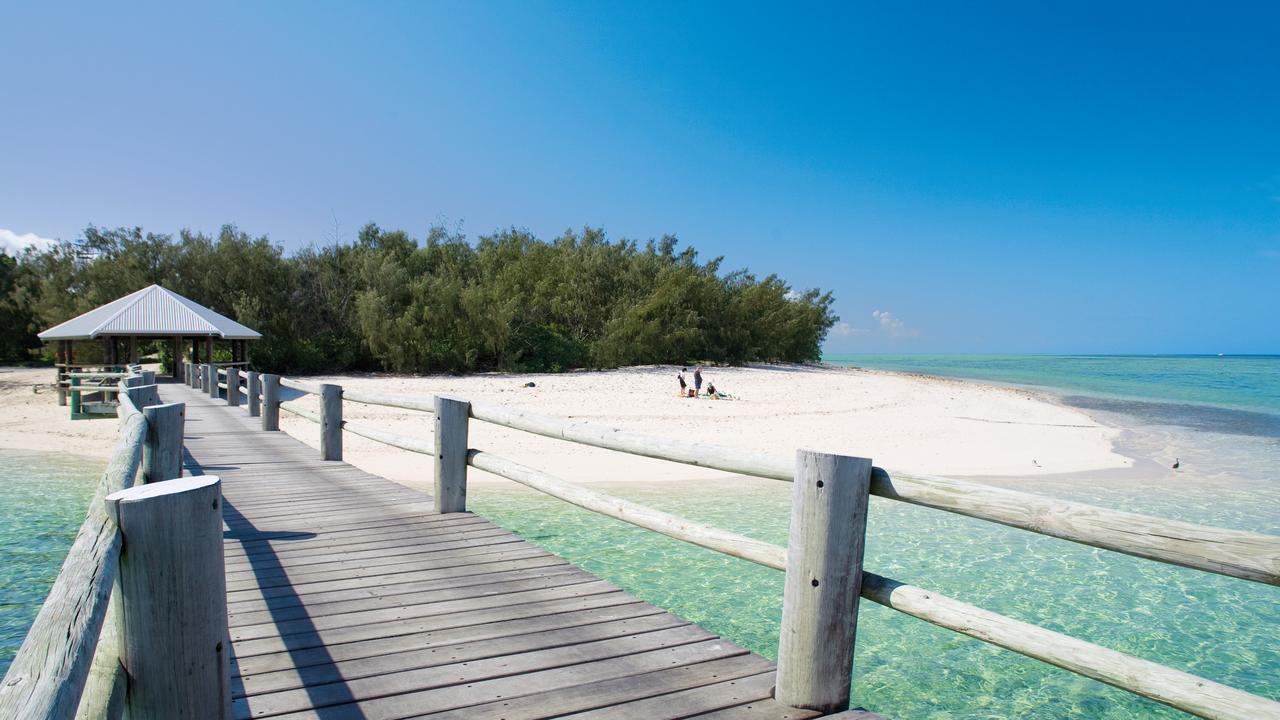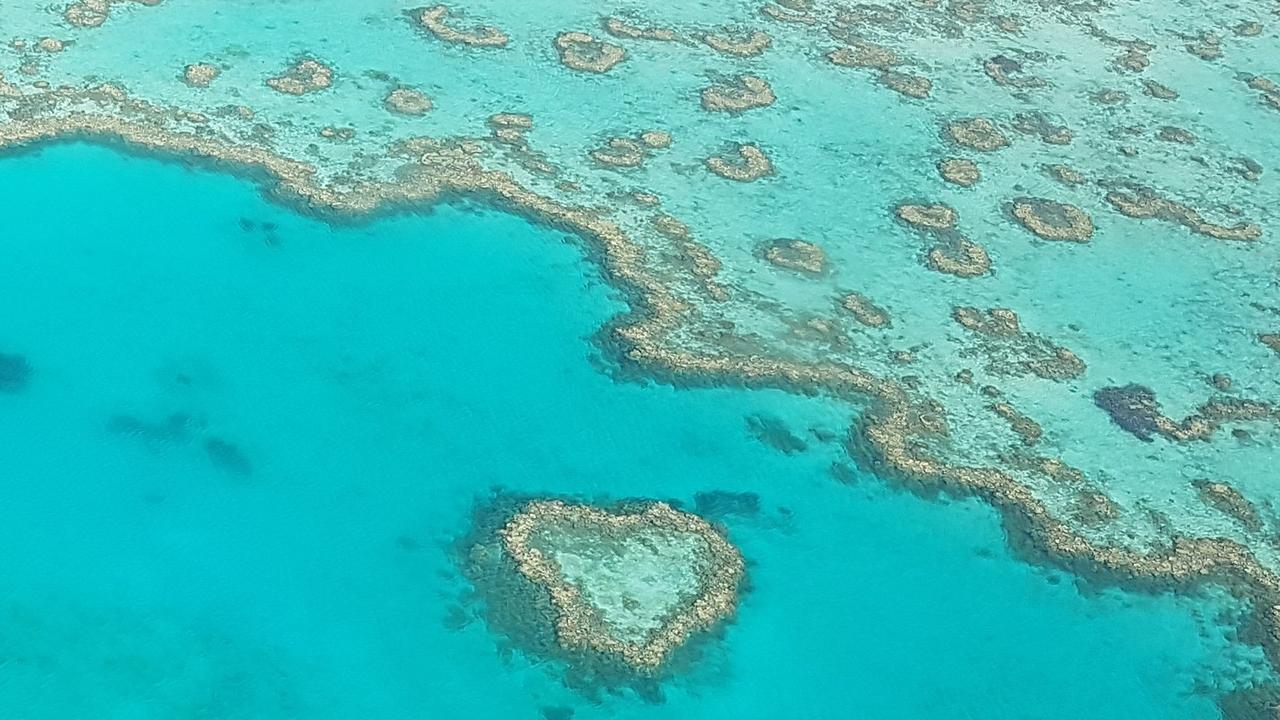Great Barrier Reef study shows largest decline of coral in 39 years
New findings from the Great Barrier Reef show a large chunk of coral has disappeared from its northern section as warmer waters, cyclones and floods wreak havoc on the mighty natural wonder

READING LEVEL: ORANGE
The coral in the Great Barrier Reef has suffered its biggest decline in 39 years.
Climate change, cyclones and floods have led to a large chunk of coral disappearing from the northern sections of the mighty natural wonder.
Early results from the Australian Institute of Marine Science (AIMS) in-water surveys found that 12 out of 19 reefs surveyed along the central-northern coast between Lizard Island and Cardwell have seen serious coral decline in the past year.
While not yet complete, the survey results show the northern parts of the reef have had multiple disturbances over the summer, which have impacted the coral and its surroundings.
More than a third of the hard coral cover was lost on the Cooktown-Lizard Island sector, marking the largest decline in hard coral cover in the 39 years AIMS has been conducting its Long Term Monitoring Program. Hard coral cover indicates the percentage of live coral on the reef’s surface.

Reports indicate that one part of the Cooktown-Lizard Island reef lost almost three-quarters (75 per cent) of its coral cover since the start of the year.
Heat stress* driven by climate change was one of the major reasons for the coral loss, said AIMS leader Dr Mike Emslie.
Exposure to ongoing heat, pollution and low tides can result in coral expelling its algae*, which turns the coral from a vibrant colour to white, also known as bleaching.
If heat continues to affect the area, the algae won’t return and the coral is left to die.
“The heat stress got so high in some areas that mortality* is not a surprising outcome,” Dr Emslie said.

Cyclones and pollution have also affected the health of the coral.
“Tropical Cyclones Jasper and Kirrily also exposed many to wave heights likely to cause damage to corals, generally greater than four metres,” he said.
Almost 10 years ago, back-to-back mass bleaching of the Great Barrier Reef in 2016 and 2017 affected two-thirds of the reef.
More recently, the fast-growing coral, Acropora, has been “partly responsible” for the reef’s recovery.
However, this same coral was the most affected by the recent heat stress, said Dr Emslie.
“This fast-growing coral has been partly responsible for the recent recovery on the reef but is also susceptible to the kind of disturbance events we’ve seen this summer,” he said.

In contrast, branching Acropora and larger coral Porites were less affected, which “points to the variability* and dynamics* on coral reefs”.
Although results from the full assessment of the Marine Park won’t be available until mid-2025, the ongoing impact of bleaching on the reef is a sign of what may come in the next few months.
“Its resilience* is being severely tested,” said Dr Manuel Gonzalez Rivero.
It’s not just Australia feeling the brunt; the ongoing impact of climate change threatens “reefs around the world,” he said.

“The 2024 mass bleaching event on the Reef, its fifth since 2016, forms part of the fourth global bleaching event impacting both the northern and southern hemispheres of the Atlantic, Pacific and Indian Oceans during 2023 and 2024, documented in more than 60 countries and territories worldwide,” Dr Rivero said.
While the decline is sobering news, it comes as the reef enters prime November spawning season, where the full moon and warm waters trigger coral to reproduce. Scientists have remained hopeful that corals surviving mass bleaching events will pass on heat-tolerant genes* to the next generation. Find the full story in the Extra Reading section below.
POLL
GLOSSARY
- heat stress: when coral becomes unwell due to a rise in sea water temperature
- algae: tiny organisms that live in coral. Algae and coral rely on each other in what’s called a symbiotic relationship, whereby the algae produces nutrients that the coral consumes and the coral emits a waste product that the algae consumes as a nutrient
- mortality: death
- variability: differences among species
- dynamics: the forces that push change, growth or development within a system
- resilience: strength and the ability to adapt and survive in difficult times
- spawning: reproduction of coral
- heat-tolerant genes: genes that can withstand warmer waters and survive climate change
EXTRA READING
Full moon to trigger coral spawn
Fake reef reels in catch of the day
Government hands in Reef report
QUICK QUIZ
1. Which three factors have led to the decline of coral in the Great Barrier Reef?
2. What role has Acropora played in the back to back bleaching events of 2016 and 2017?
3. What does the loss of hard coral cover indicate?
4. What two factors bring on coral spawning?
5. How could coral spawning help build resilient reefs for the future?
LISTEN TO THIS STORY
CLASSROOM ACTIVITIES
1. How do they know?
What type of data or evidence do you think the scientists would have used to learn why the coral reefs have declined so much? Use information in the story to help you. Write a list. Next to each item in your list, write a sentence explaining what the evidence or data would have told the scientists.
Time: allow at least 20 minutes to complete this activity
Curriculum Links: English, Science
2. Extension
According to the story, scientists are hopeful that coral that survives will pass on heat tolerant genes. Imagine that you could interview one of the scientists to find out more about this. Write at least four questions that you would ask. Then, write the answers that you think they might give you. Use your research skills to help if you need to.
Time: allow at least 25 minutes to complete this activity
Curriculum Links: English, Science, Geography
VCOP ACTIVITY
Wow word recycle
There are plenty of wow words (ambitious pieces of vocabulary) being used in the article. Some are in the glossary, but there might be extra ones from the article that you think are exceptional as well.
Identify all the words in the article that you think are not common words, and particularly good choices for the writer to have chosen.
Select three words you have highlighted to recycle into your own sentences.
If any of the words you identified are not in the glossary, write up your own glossary for them.
Extension
Find a bland sentence from the article to up-level. Can you add more detail and description? Can you replace any base words with more specific synonyms?
Down-level for a younger audience. Find a sentence in the article that is high level. Now rewrite it for a younger audience so they can understand the words without using the glossary.

